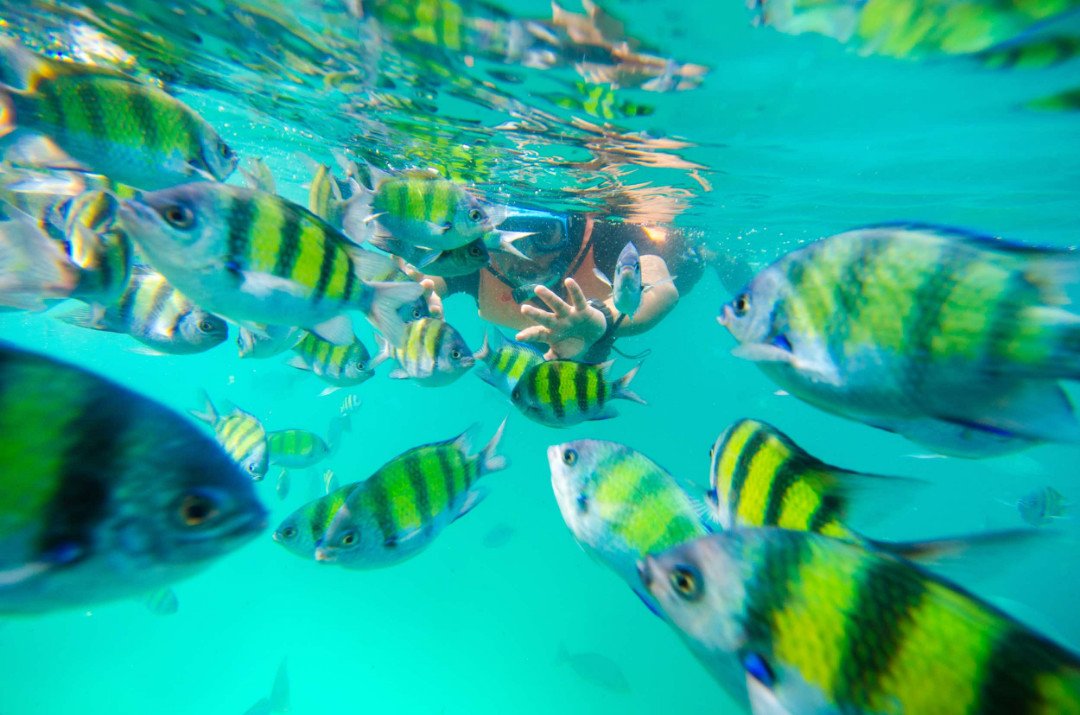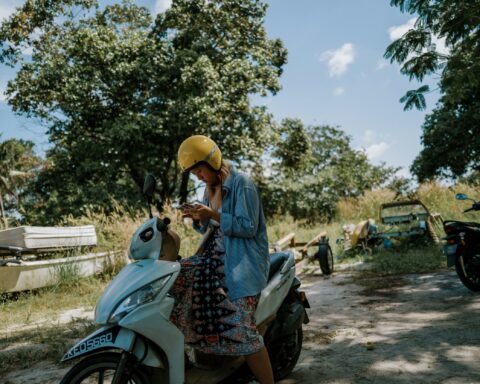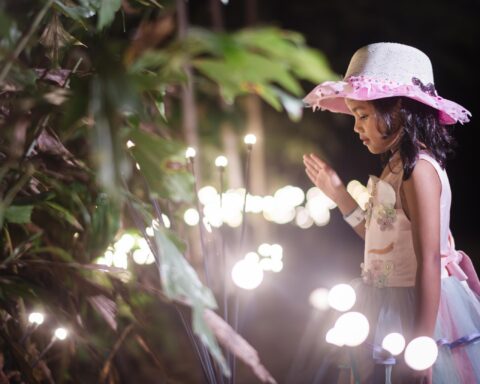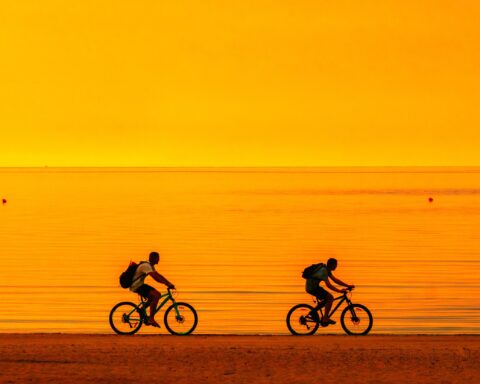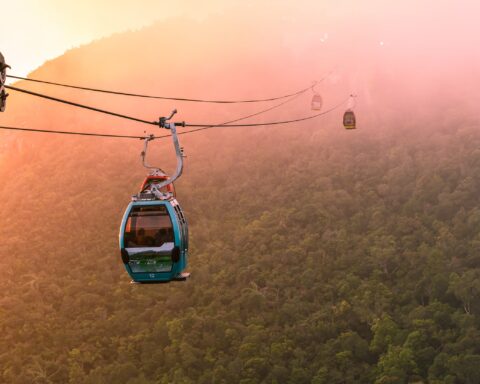Langkawi is one of the finest UNESCO Geoparks in Southeast Asia. Situated alongside the Strait of Malacca, it has a delicate and distinctive amalgamation of beaches, primeval rainforests, mangroves and mountains. This unique ecospace provides refuge to various flora, fauna and marine life to flourish. The geological significance of the island’s landscape along with its ecological diversity makes Langkawi a perfect destination for nature enthusiasts.

Mount Machinchang Cambrian Geoforest Park:
Mount Machinchang is the oldest rock formation in Malaysia dating as far back to the Cambrian age, when life was just beginning to flourish on Earth. The rainforests surrounding this mountain first appeared in the Mesozoic era, a time when dinosaurs roamed its land. The Oriental village at the foot of this mountain is the gateway to the Machinchang Geopark. The magnificence of this ecosystem is best observed from the Langkawi cable car ride and the SkyBridge hanging above the rainforest.
Kilim Karst Geoforest Park:
The Kilim Karst Geoforest Park is known for its vast network of mangrove rivers, and can only be accessed by boats or kayaks. The abundance of insects and fishes in the mangroves, sustain hundreds of species of birds and animals including brown winged kingfisher, brahminy kites, long tailed macaques and mangrove pit vipers. The Floating Fish Farm on the Kilim river is part of most boat tours where you can also hand feed sting rays.

Pulau Payar Marine Park:
Pulau Payar Marine Park is a collection of four small islands located 30 km south of the main island. To preserve the fragile coral reef biome, access and activities in this marine park are regulated by authorities. Individual access requires permission, but you can join a tour and snorkel among the corals without any hassle. Undoubtedly, this park is the best place in Langkawi to catch a glimpse of the undersea life of the Andaman Sea.
Waterfalls:
The joy of hiking in Langkawi is always exemplified if your destination is a hidden waterfall called Telaga Tujuh. For less excruciating adventure, visit the Durian Perangin waterfall in the north-eastern part of the island. The Temurun waterfall, easily accessible by road is a three tier 200-meter cascade and should not be missed.

Rainforest trekking:
Trekking and hiking tours in Langkawi’s primitive rainforests will give you an inside view of the wonderful web of ecosystems, where various species of birds, wildlife and insects survive and thrive.

Caves:
Langkawi’s caves or Gua in Malay, are nature’s art galleries which exhibit more than a million year old stalactite and stalagmite structures, and rock formations. Gua Cerita is known for the many legends associated with it. Gua Kelawar, another popular cave, is home to hundreds of fruit bats hanging above stalagmite columns. Several other caves accessible to the public are located on the northern part of the Island.
Lake of the Pregnant Maiden:
The lake of the pregnant maiden in the Dayang Bunting Marble Geoforest Park is a freshwater lake separated from the sea water only through a narrow rim. It is located on the second largest island in the archipelago. The lake offers swimming, boating and relaxing opportunities. A legend claims that the water of this lake has fertility enhancing properties and swimming in it will help couples trying to conceive.

Langkawi Wildlife Park and Underwater world:
The Langkawi Wildlife Park and the Underwater World are great spots for young families and animal lovers. At the Wildlife Park you can watch more than 1500 birds flying freely in the aviary, and hand feed a number of animals. At the Underwater World more than five hundred species of marine creatures will keep you busy for the whole day.


